The Hare's Mask Darter is essentially a bead head hare's ear nymph tweaked to imitate New Zealand’s swimming nymphs, known colloquially as 'grey darters'.
These 'grey darters' or swimming nymphs of Rallidens mcfarlanei, Siphlaenigma janae and the five species of Nesameletus are remarkably similar in appearance, and much slimmer than swimming nymphs of the genera Onicigaster and Amelatopsis.
As a group, 'grey darter' swimming nymphs are found throughout New Zealand, in stony streams with good water quality, and often in headwaters and back country streams.
When mature, nymphs generally grow to between 1.5 and 2cm, while immature nymphs are smaller.
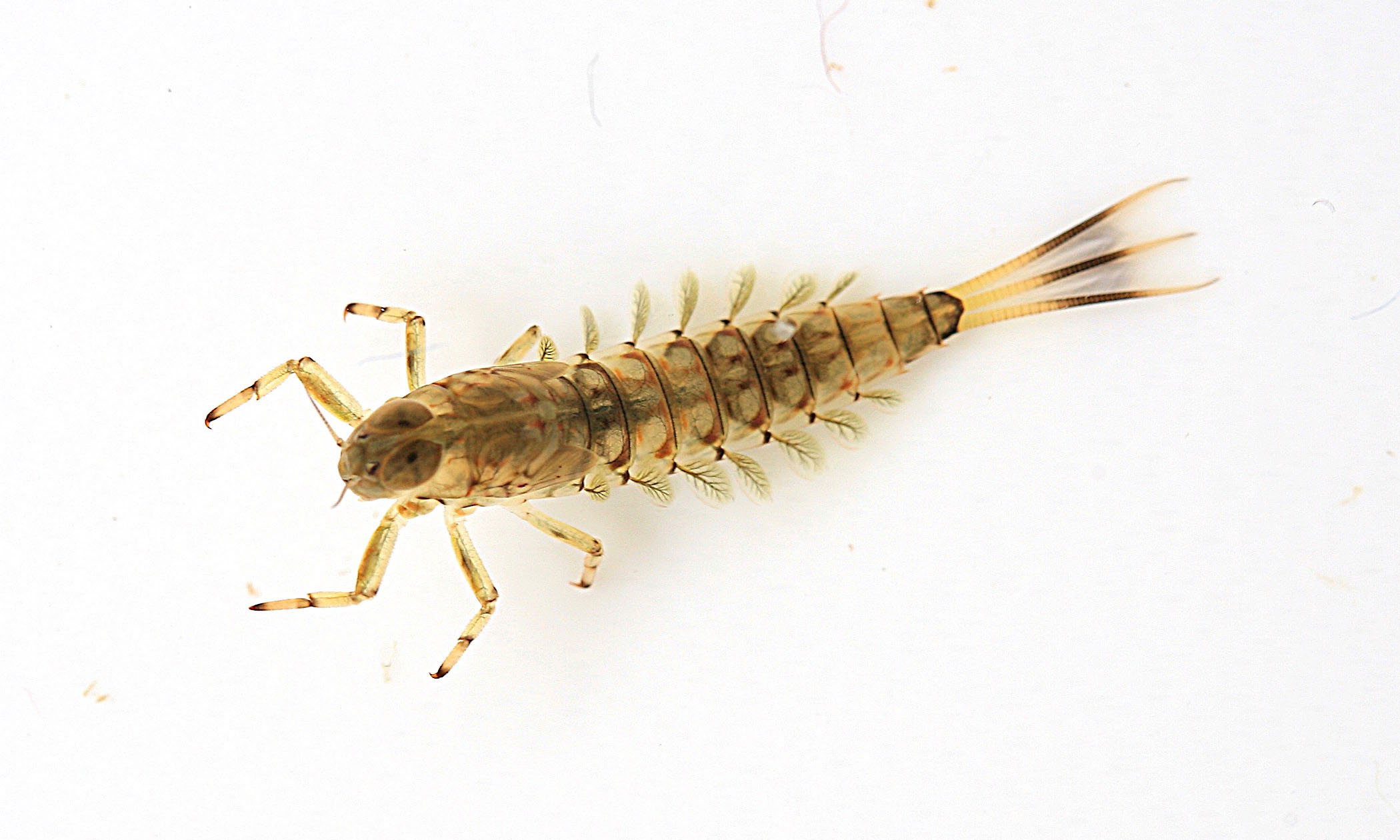
Immature Nesameletus nymph
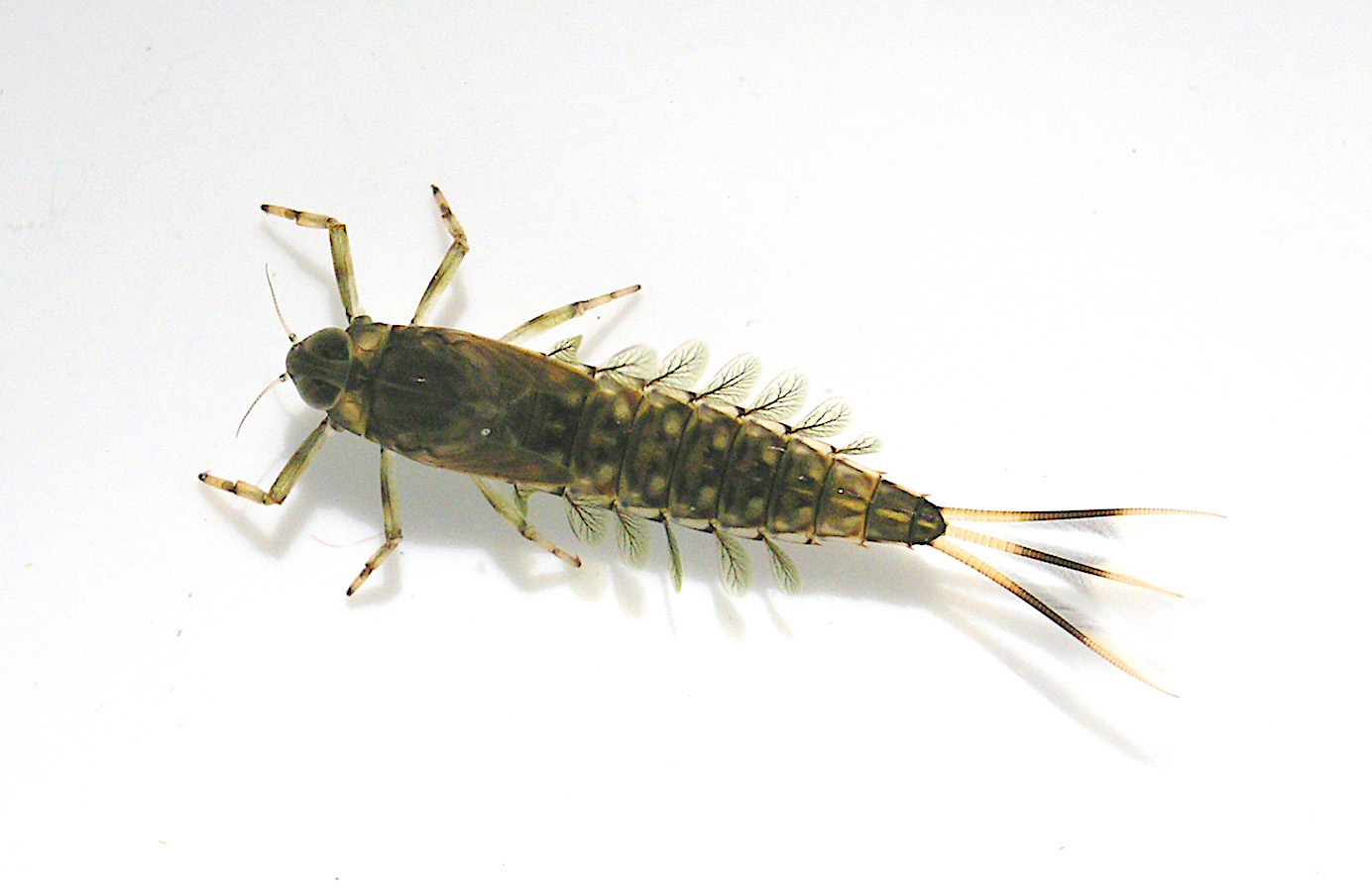
Mature Nesameletus nymph
I have caught fish on the Hare's Mask Darter all over New Zealand, from backcountry streams to lowland riffles. A Hare's Mask Darter on the dropper with a Jelly Crimp Nymph on the point, has become my go-to tandem nymph rig for New Zealand streams, especially where mayflies are prevalent.
Some days, rainbows and browns will mostly take the Hare's Mask Darter, and on other days the Crimp Nymph. Although the pattern is based on New Zealand’s swimming mayfly nymphs, the slim buggy profile may also be mistaken for a stonefly nymph or net-spinning caddis larva.
I generally like the Hare's Mask Darter with a gunmetal or black bead and copper wire rib, but a gold bead and red wire rib is often very effective in discoloured water and overcast conditions, also on big rivers in any condition. A tungsten bead head and double-wrapped lead under-body provide this pattern with exceptional sink rate for its size. The super-glued braided-ribbon wing-case adds a little realism and a lot of durability.
Recipe :
Hook: TMC 2302 or Daiichi 1760, size 14 to 12
Head: Black/gunmetal or gold tungsten bead, 2.5mm for #14 and 2.8-3mm for # 12
Underbody: Lead wire, wrapped double over thorax: 0.01” for #14 and 0.015” for #12
Thread: Brown or dark olive 70 denier (6/0)
Tail: Cock hackle fibres, medium brown, furnace or grizzly.
Rib: Copper wire: brassy for size 12 and small for size 14. Red for gold beads and natural copper for black/gunmetal beads.
Abdomen and thorax: Natural Hare’s mask dubbing
Wing case: Kreinick ribbon: 1/16” for size 14 and 1/8” for size 12: steel grey (10HL) for black/tungsten and bronze (52HL) for gold beads
Tying Steps
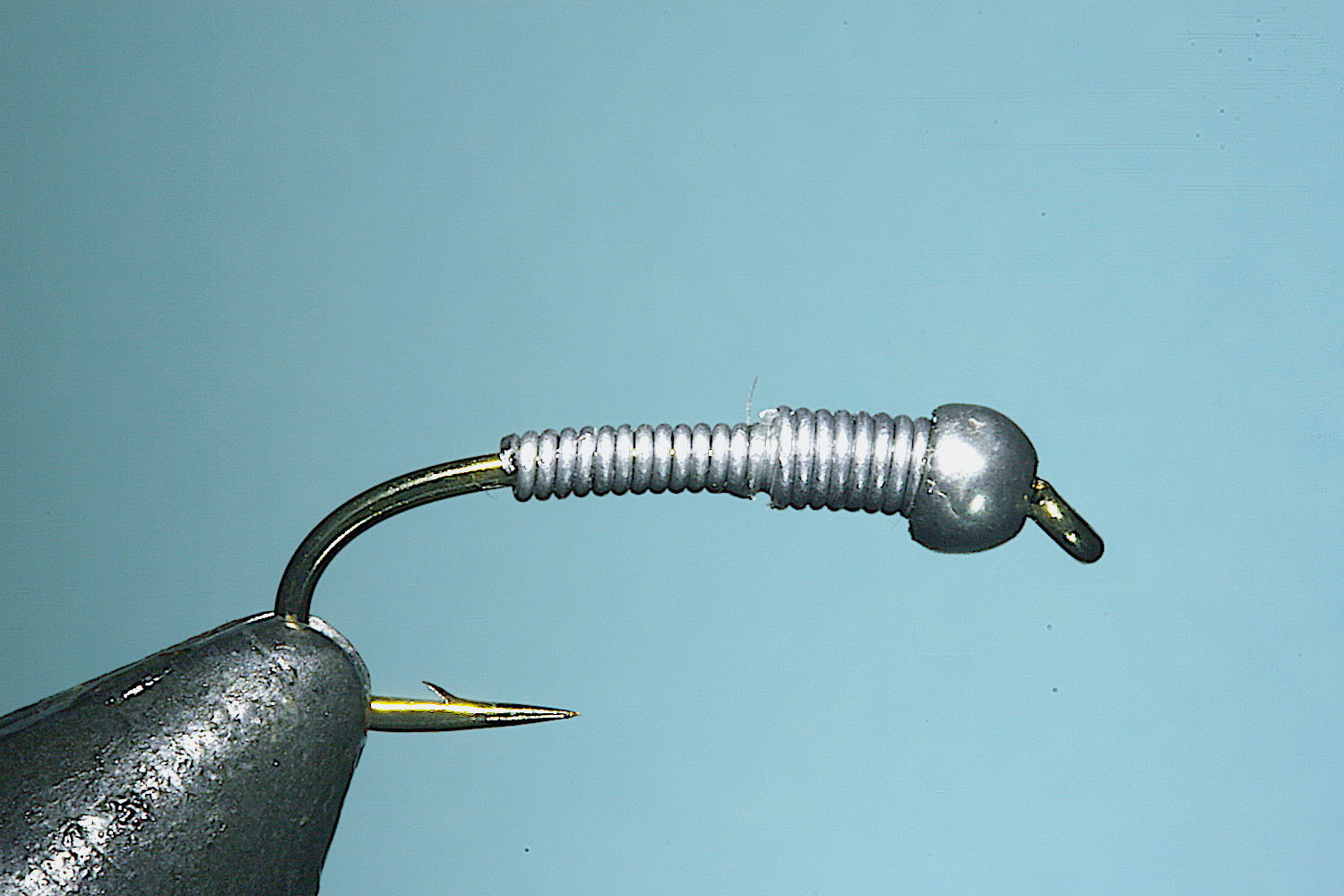
Step 1
Slip the bead onto the hook and place the hook in your vise.
Next take a 12 cm length of lead wire and wrap it in closed turns from the position on the hook shank immediately above the midpoint between barb and hook point, continuing to the bead - do not tie off.
Now place a drop of Super Glue onto the front third of the lead wraps and then wrap the lead wire rearward in a second layer to build the thorax.
To match the naturals, head and thorax combined should be slightly shorter than the abdomen.
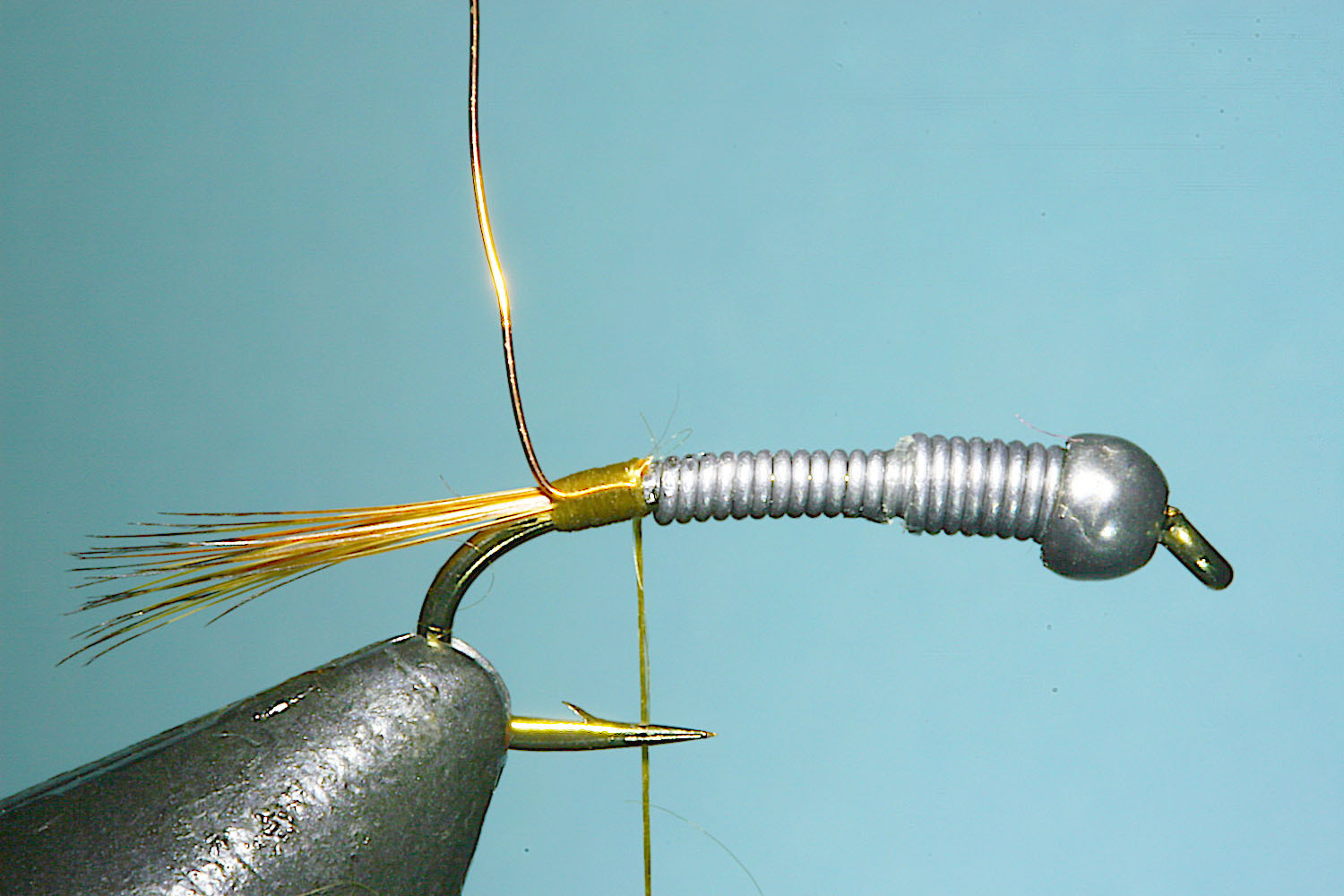
Step 2
Attach the thread behind the lead wraps and tie in a clump of hackle fibres, creating a tail about half the length of the hook shank. Now tie the rib in on the near side of the shank.
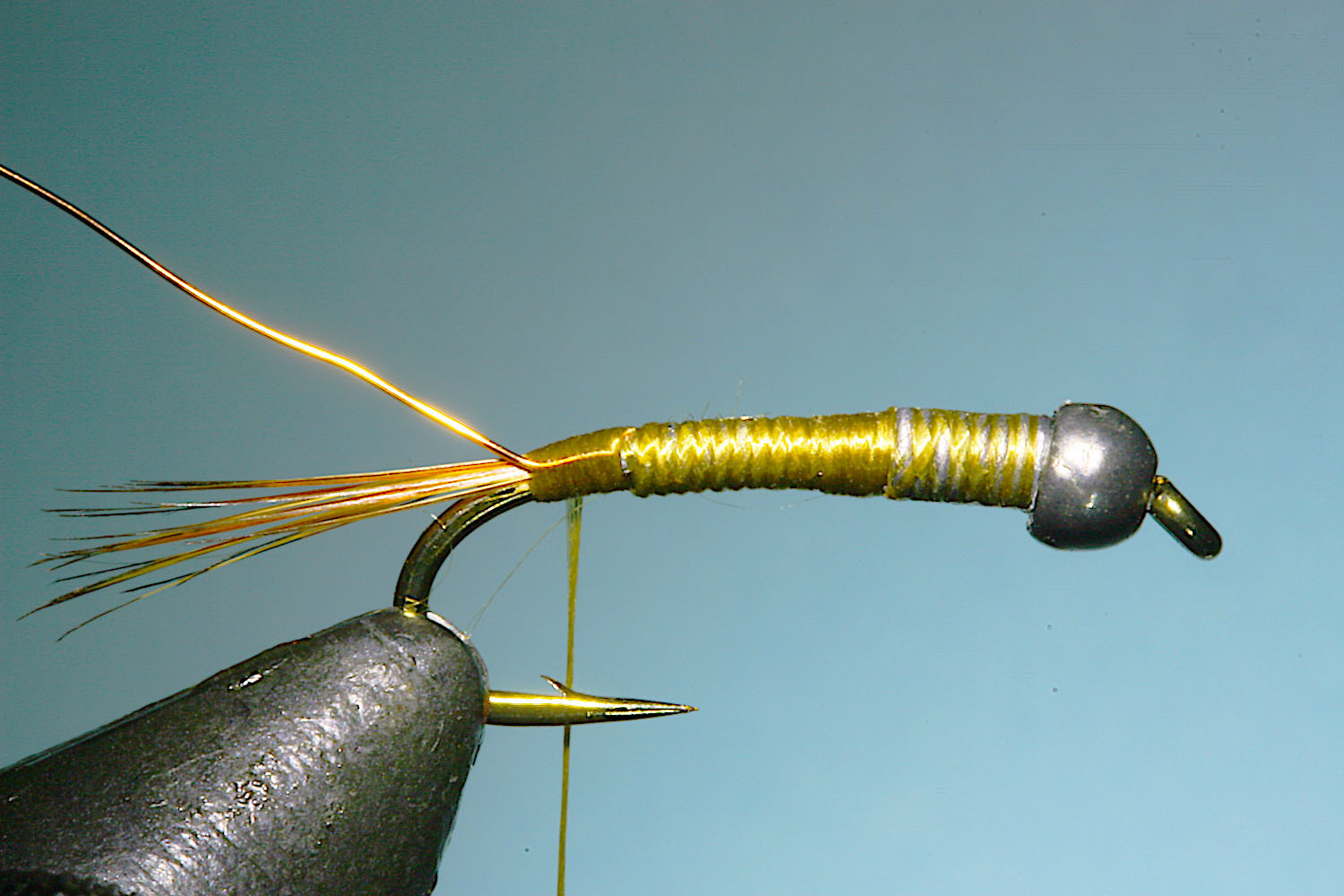
Step 3
Spin the bobbin anti-clockwise to flatten the thread and then cover the lead wire by moving fore and aft in open turns, at the same time building a smooth carrot shaped abdomen.
Return the thread to the rear of the hook and flatten the lead thorax slightly with a pair of flat nose pliers.
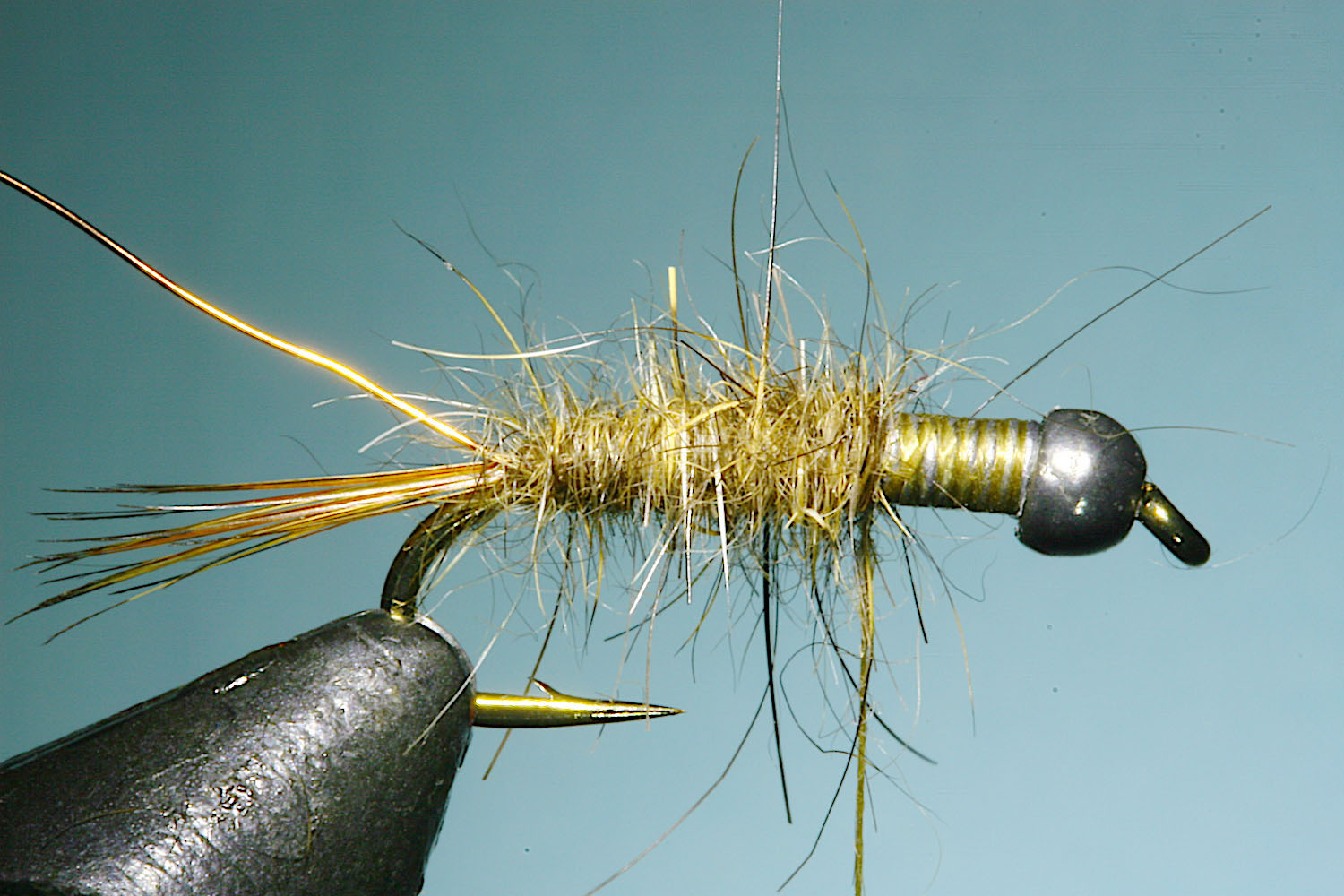
Step 4
Twist a thin noodle of hare’s mask dubbing onto the thread and dub the abdomen.
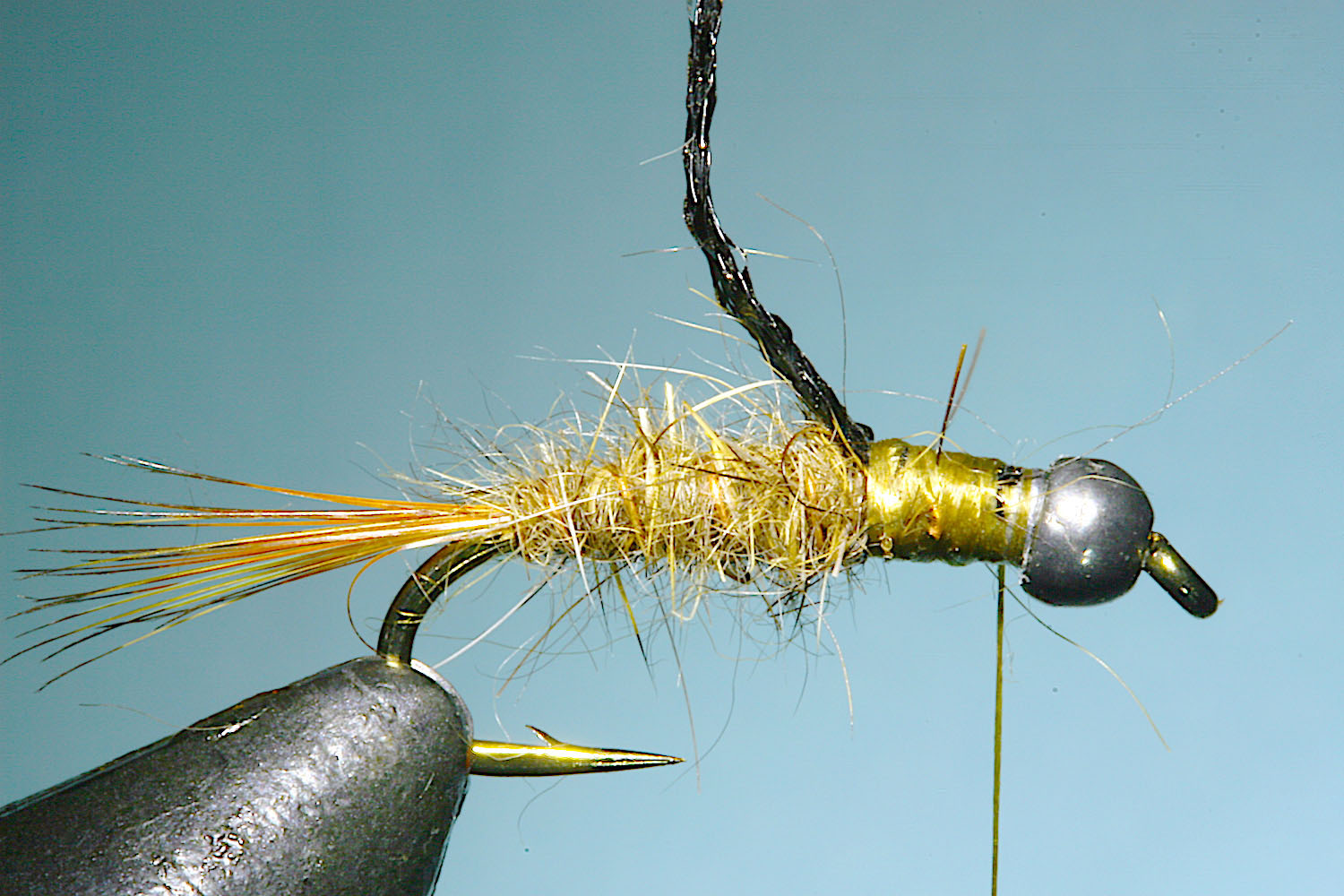
Step 5
Counter wrap the wire rib and then tie it off (counter wrapping the rib results in a slimmer abdomen and ensures the copper wire is not buried in the dubbing). Next tie in the ribbon wing case atop the flattened lead under-thorax.
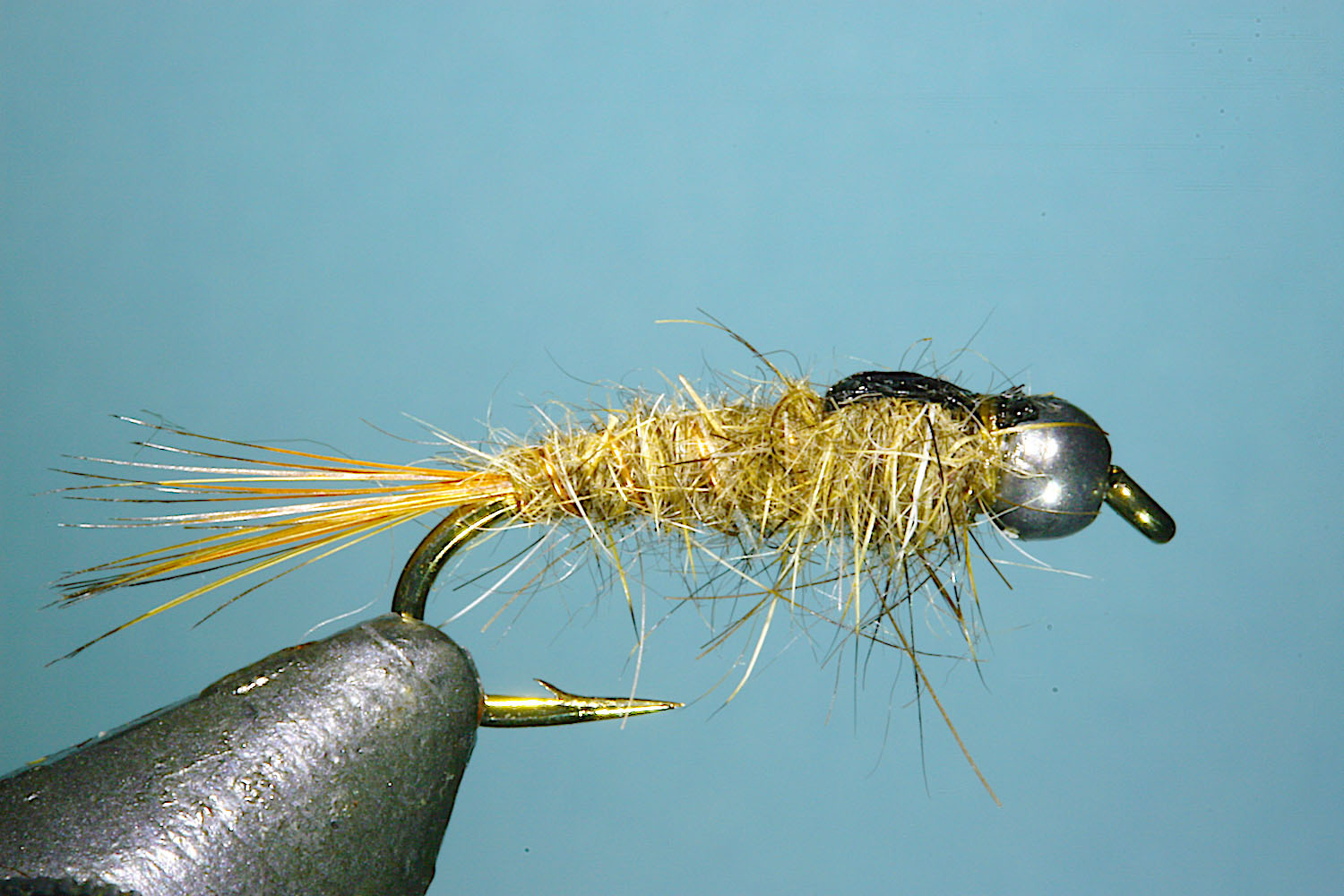
Step 6
Twist a thin noodle of hare’s mask fur onto the thread and starting 0.5mm behind the bead head dub a double layer, winding rearward to the wing case and then forward to the starting point. This method produces a durable spiky thorax.
Whilst stroking the guard hairs rearward with the thumb, index and middle fingers of the left hand, bring the wing case forward; securing it behind the bead head with two tight turns of thread, followed by two half hitches.
Trim away the excess ribbon and, using a toothpick or dubbing needle, coat the wing case and the upper surface of the thread wraps with a drop of waterproof Super Glue.
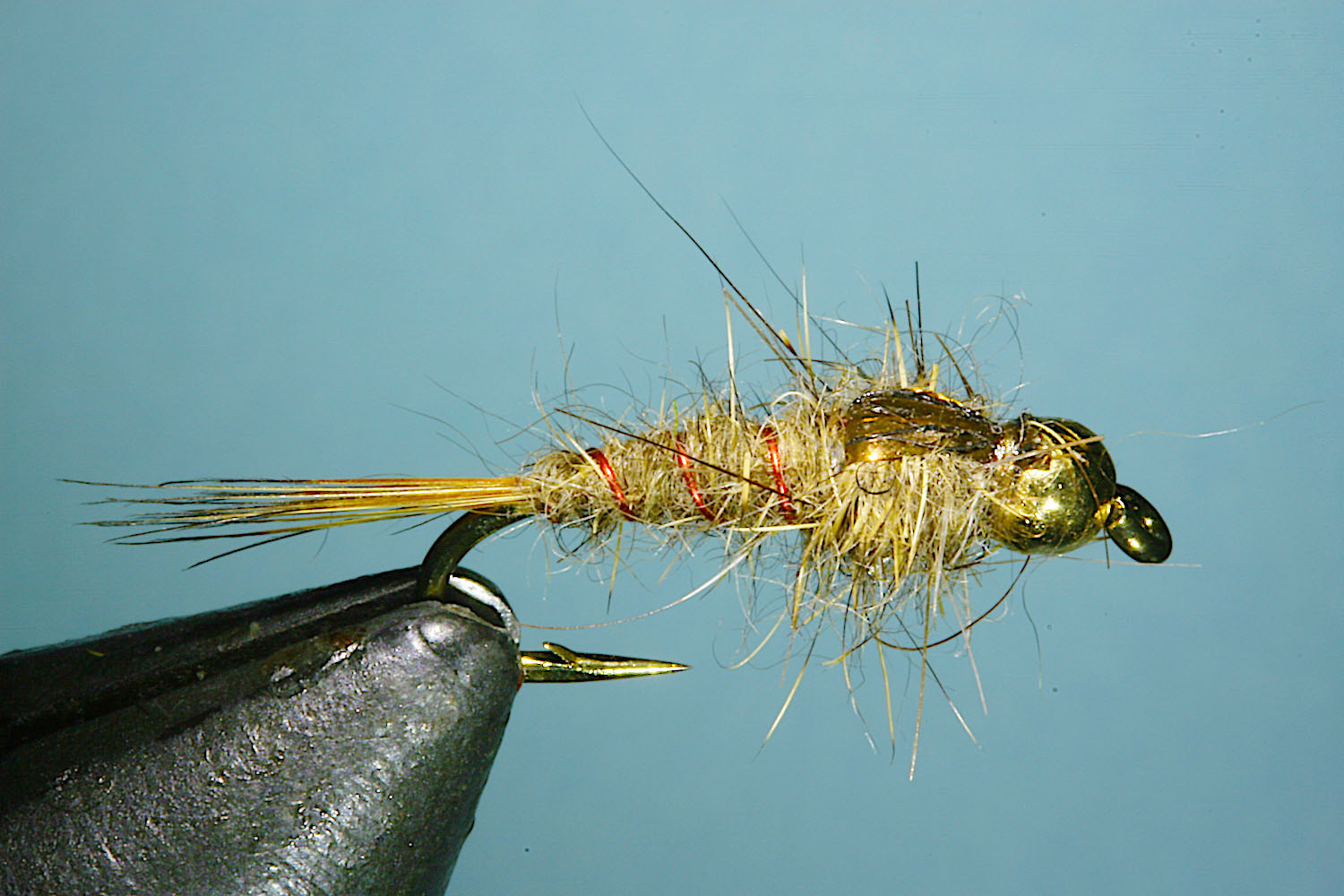
Step 7
The combination of gold bead and red wire rib is often devastating in discoloured water or overcast days, and on big rivers like the Rangitikei, in any condition.
+ Effective Spey flies for New Zealand Trout and techniques for fishing them
+ Evolution of the Swing Minnow - A deadly Trout Spey Streamer
+ Introduction to wonders of Stretch Cord
+ Jelly Midge
+ Jelly Bloodworm and Jelly Grub
+ Jelly Caddis
+ Jelly Leg Colly
+ Jelly Bellow Minnow
+ Jelly Crimp Nymph
+ Hot Foam Hopper
+ Silicone Wing Cicada - Designing the Fly
+ Silicone Wing Cicada - Tying Steps
+ Gurgle Pop Minnow
+ Cutting your own Foam Cylinder
